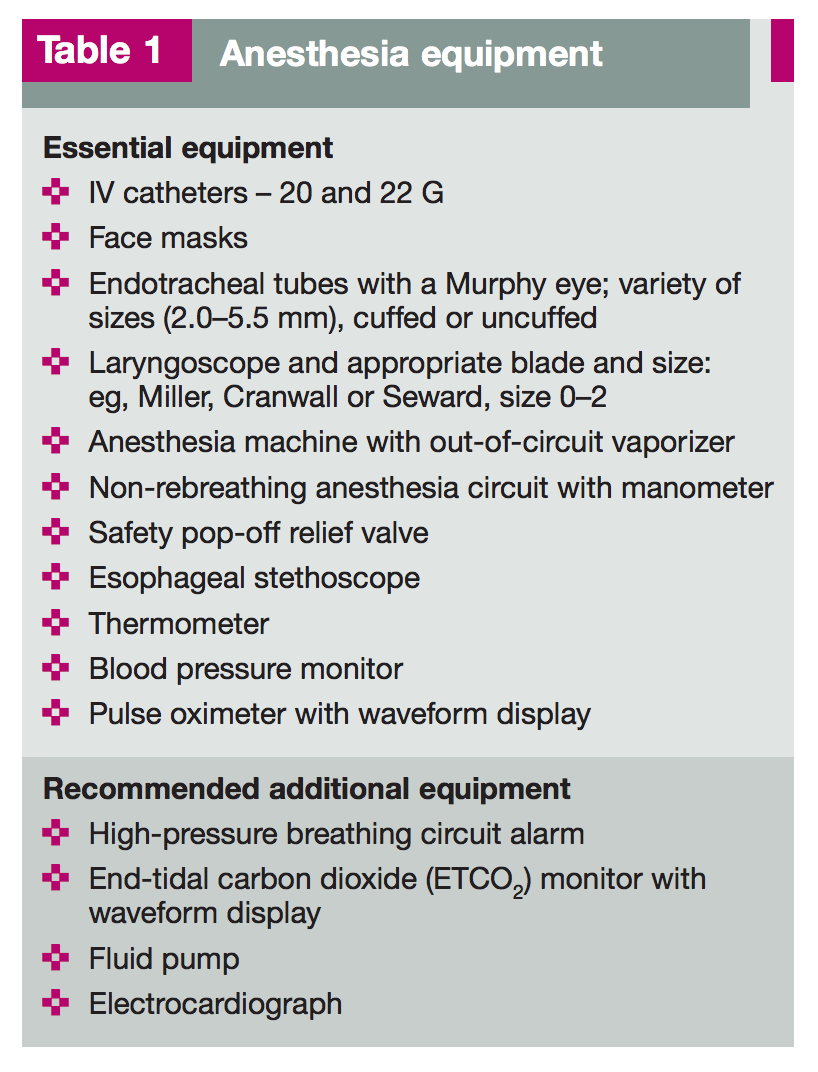AAFP Releases New Feline Anesthesia Guidelines
The overarching purpose of the new feline guidelines is to make anesthesia and sedation safer for the feline patient.
Feline patients that undergo anesthesia have a higher mortality rate compared with dogs and are also at a relatively greater risk of complications under anesthesia than many other species. For these reasons, the American Association of Feline Practitioners (AAFP) has created the first feline-specific anesthesia guidelines.
­

Credit: AAFP Feline Anesthesia Guidelines
Recently published in the Journal of Feline Medicine and Surgery, the 2018 AAFP Feline Anesthesia Guidelines cover everything from the standardized, evidence-based approach for administering anesthesia to methods of avoiding perioperative complications. The guidelines are organized in the following areas:
- Use and Care of Equipment
- Preanesthetic Assessments
- Comorbidities
- Critical Patient Emergencies
- Anesthesia and Sedation
- Perioperative Complications
- Anesthesia Recovery
“The overarching purpose of the AAFP Feline Anesthesia Guidelines is to make anesthesia and sedation safer for the feline patient,” AAFP CEO Heather O’Steen, CAE, said. “We are committed to improving the health and welfare of all cats and providing this resource to veterinary teams is an important milestone.”
The guidelines include visuals—such as tables, charts, and algorithms—along with tips and techniques for the entire veterinary team to minimize risks associated with administering anesthesia to feline patients.
In addition to the guidelines, the AAFP has created supplemental materials, which cover methods of troubleshooting certain complications—bradycardia, tachycardia, hypotension, hypoxemia, ventilation, prolonged recovery, and dysphoria—as well as how to correctly place an endotracheal tube in a cat.
RELATED:
- Banfield Releases Anesthesia and Analgesia Guidelines
- Benefits of Individualized Anesthesia Plans
Susan M. Gogolski, DVM, PMP, DABVP (Canine/Feline Practice) and Sheilah A. Robertson, BVMS (Hons), PhD, DACVAA, DECVAA, DACAW, DECAWBM (WSEL), MRCVS, co-chairs of the new guidelines, said they hope the guidelines will become the go-to resource for veterinary practices.
“By proactively developing an individualized anesthetic plan that considers the uniqueness of each feline patient and recognizing that ‘one size does not fit all,’ the experience for the cat can be improved and the outcome successful,” they said in a statement.